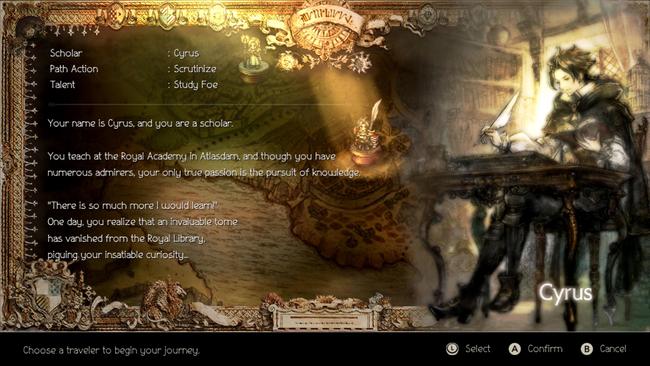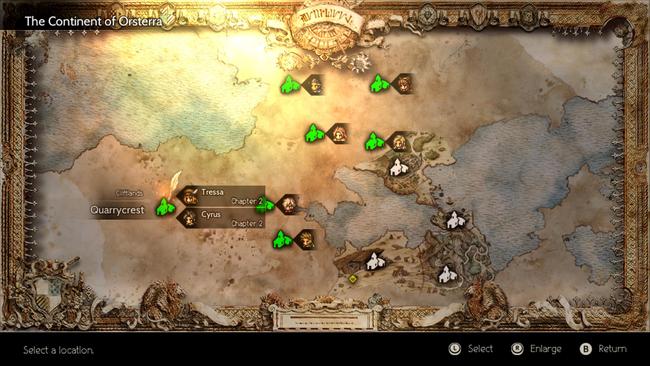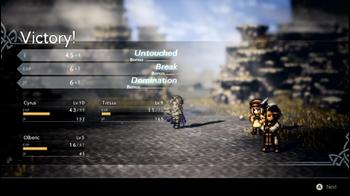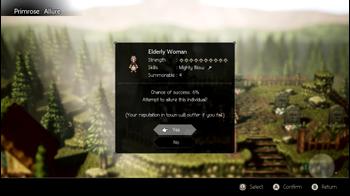Octopath Traveler Hands-on Preview: A Stunning Return to a Bygone Era of RPGs
I remember the first batch of games being shown off to a yet unreleased Nintendo Switch last January. All eyes were undoubtedly on The Legend of Zelda: Breath of the Wild at the time; Splatoon 2’s dazzling announcement, a peek at Mario’s next adventure in Super Mario Odyssey, and the surprise reveal of Xenoblade Chronicles 2 certainly all caught tremendous attention from different groups all around the world. Third-party ports and new titles further spread the initial fever for Nintendo’s next platform - not just a console, not just a handheld.
Among those slew of world premieres sparked the interest of RPG fans worldwide. It featured sprite models that moved around on a 3D plane. Many of those who yearned for a return to the “golden age” of classic Japanese RPGs probably fell in love with its visuals at first sight; a brand-new title that looked like it lost its way to the 90’s - the mysterious Project Octopath Traveler.
Fast forward 19 months later, Octopath Traveler is finally coming out. I got a chance to play the full version for about 7 hours now. To be perfectly honest, I was iffy on it at first but once I assembled a full party of four, it all clicked for me and now I’m itching to play more.
Note that this preview of Nintendo’s next big RPG is spoiler-free.

Octopath Traveler encourages people to play the way they want to. It gives players the tools they’ll need, but its goals are open-ended enough so they can tackle challenges when they want with who they want. From the start, players can choose any of the game’s eight protagonists to begin their adventure.
The most important ramification about your starting character is that person is a permanent active party member; they cannot be swapped out of the main party for another character.
I chose Cyrus, a scholar and a teacher at the Royal Academy in Atlasdam. His endless thirst for knowledge often makes him socially clueless to those around him, but his unique Path Action ability allows him to scrutinize NPCs that leads him to solve a peculiar theft early on. Eventually, he stumbles upon the perfect excuse to travel around freely.
The early hours of Octopath Traveler is a bit on the slow side. After the initial character’s prologue, you're tasked with traveling around the world to recruit at least three more of the protagonists. You can choose whomever you want in whatever order - as long as you’re willing to make the trip to get there on foot first. Luckily there’s a fast travel option to any town you’ve previously visited.
Once you’ve arrived at a character’s village, you can recruit them into your party immediately. To save players the hassle of making multiple save files to see the beginning of their stories, they can choose to play through them up to a certain point.
Each protagonist’s prologue follows a similar tune: an intro to who the character is, their current state in life, how their Path Action is utilized, and a tutorial dungeon area leading to a boss fight before they venture out into the world.
Players’ parties “intervene” into the prologue arc when it’s time to enter the tutorial dungeon area portion of that. Its integration is awkward because the events of a character’s prologue only acknowledges that specific character. For instance, my party of Cyrus and Tressa accompanied Olberic on his rescue mission, but they’re never directly acknowledged in his story events and it’s assumed that Olberic tackled the mission alone once everything was said and done.
I was worried for a bit; I thought Octopath Traveler would make me do this for each and every single protagonist before I could move on. This is the main concession to this non-linear approach to storytelling - the first few hours almost has no character interactions among the group you’ve assembled. It felt stilted and uneven… until your fourth party member joins up. That’s when I finally understood how the producers of the Bravely series and the team at Acquire was going to pull this off.
The option to proceed the stories of your current group of characters open up even before you recruit everyone. This is when Octopath Traveler begins to properly weave and intertwine their tales together. Some chapters of several characters can occur at the same location while others may remain solo for awhile. Even though it may not be the smoothest way to go about it, I find these kinds of jigsaw puzzle stories fascinating. I imagine Octopath Traveler will follow in the footsteps of Live A Live; chapter progression will eventually be capped off at a certain point once everyone’s story beats begin to come together.
Underneath Octopath Traveler’s non-conventional structure is a love letter to 90’s JRPG fans. Those who loved older Final Fantasy installments before FFVII are in for a treat. It feels like the frozen clock to a bygone era is moving again. If our timeline never embraced the era of polygons and continued forth in the glory of pixelated sprites, this “HD-2D” style may have been more proliferate.
Its charm is immediately noticeable, but what really makes it stand out are the little environmental touches to make it pop beautifully. From water glistening in the background to the slight distortion over a tree to simulate a wind effect, it’s absolutely a stunning sight to behold. They even have gigantic, detailed enemy sprite models to indicate their threat level like older FF installments. Octopath Traveler nails that powerfully nostalgic feeling even if it’s something that’s never really been done before visually.
Intense turn-based battles have also been another one of Octopath Traveler’s strong suits as well. Although I’m only a handful of hours in, I’ve already faced quite a few challenging battles that’ve had me scrambling. Elements of the Bravely series come into play by storing Boost Points into attacking multiple times or strengthening the effect of an ability. Rushing to expose an enemy’s weaknesses to break their defenses will stun them as it cancels out all their imminent turns. Helpful talents like Cyrus's invaluable ability to identify an enemy weakness every or having Primrose summon a NPC she's charmed to assist added layers of strategy on top of it all.
There's a delicate balance to it all, since foes gradually became tougher and hit harder the more characters I recruited. Their stats and levels are adjusted so each protagonist's "tutorial" area and boss are never complete cakewalks; it's also easy to stumble into higher level locations out in the open world if you're not keeping a close eye on the Danger Level upon entering an area.
Thankfully, strengthening your characters takes a non-linear approach too! Each of the characters can choose to learn whichever skills they want at any time as long as they have enough Job Points for it. The cost of learning skills exponentially increases every time you learn a new one though. It'll start cheap around 30 JP, but it'll very quickly jump to 100, then 500, and so forth; I never found myself grinding for it though. As characters learn more and more skills, they'll unlock additional passive abilities along the way.

That's just scratching the surface of Octopath Traveler. It's unquestionably ambitious from top to bottom, but it has already left a strong impression on me. Octopath Traveler is okay with handing the keys to its players and letting them figure it all out. It'll tell them how to control the car, but it won't stop them from doing what they want. I feel that there's truly something special about this new, but familiar, yet refreshing RPG.

